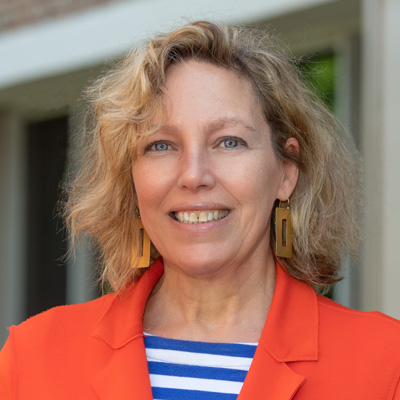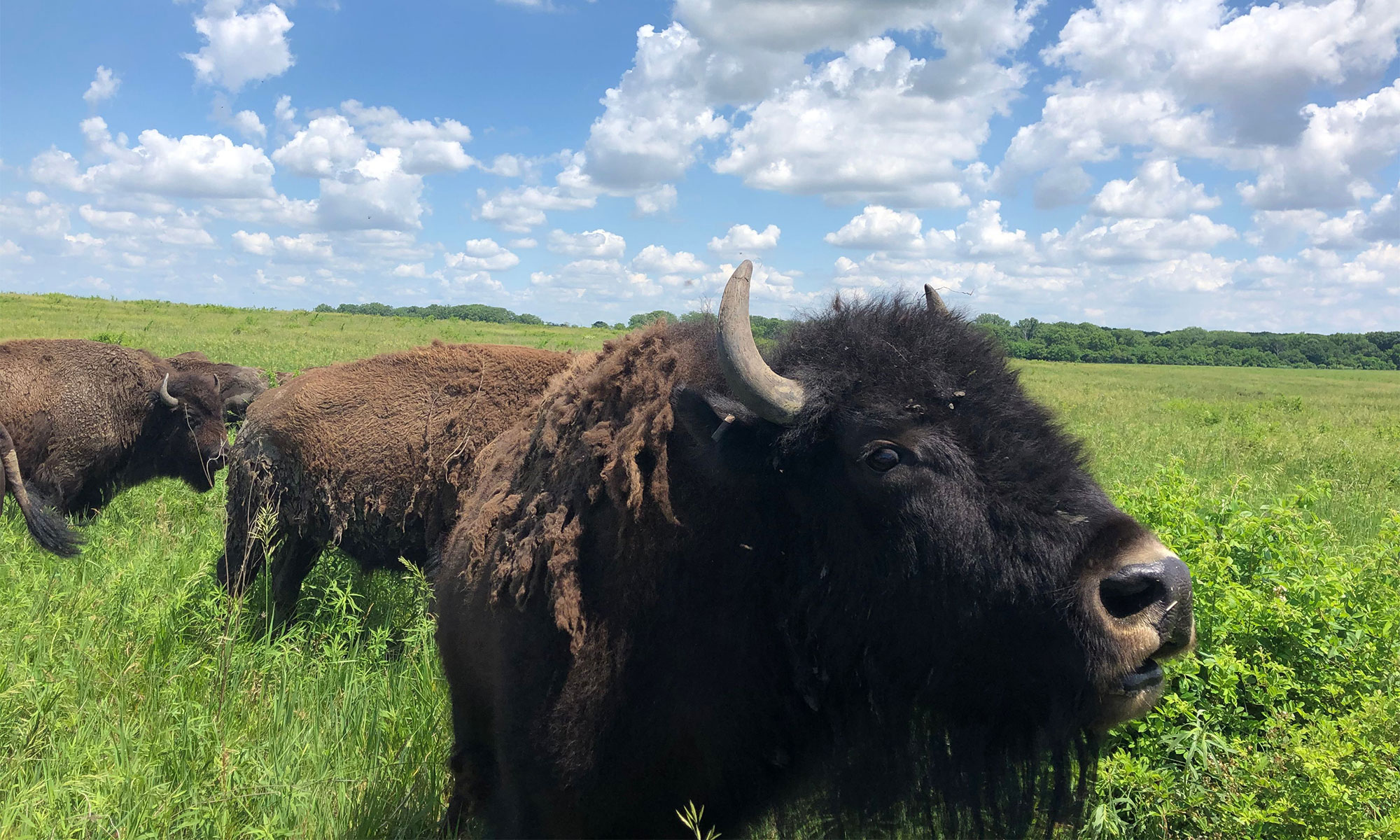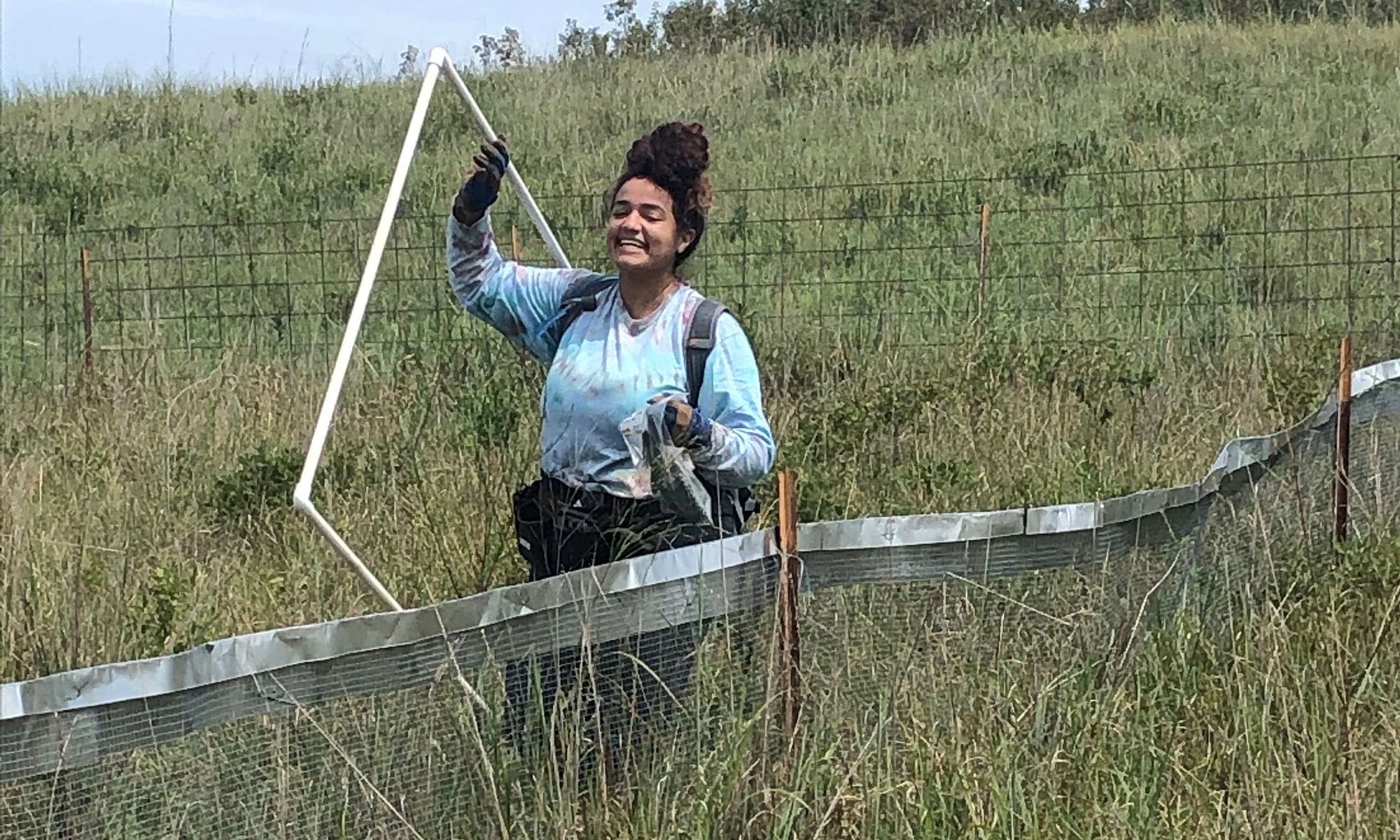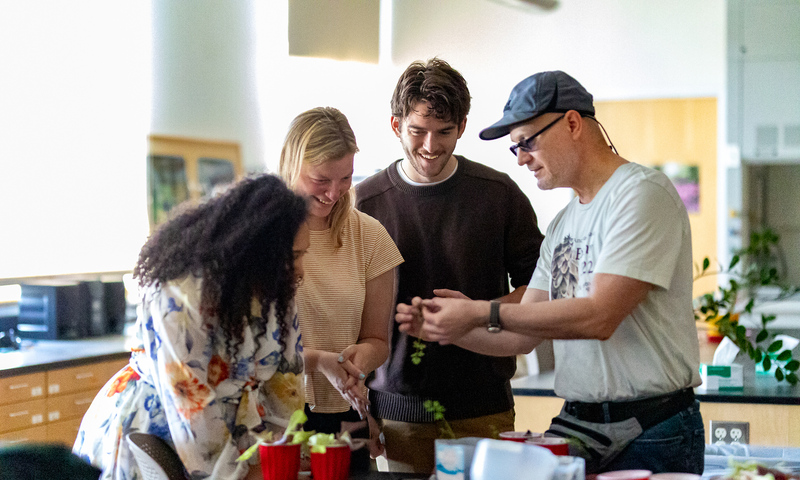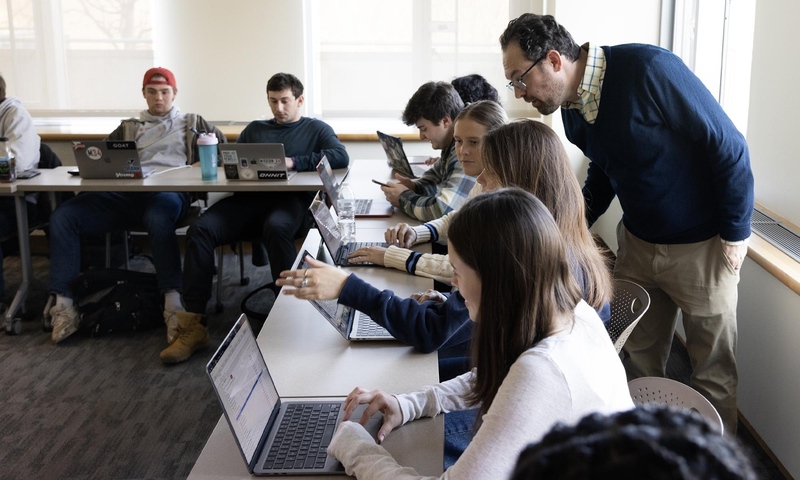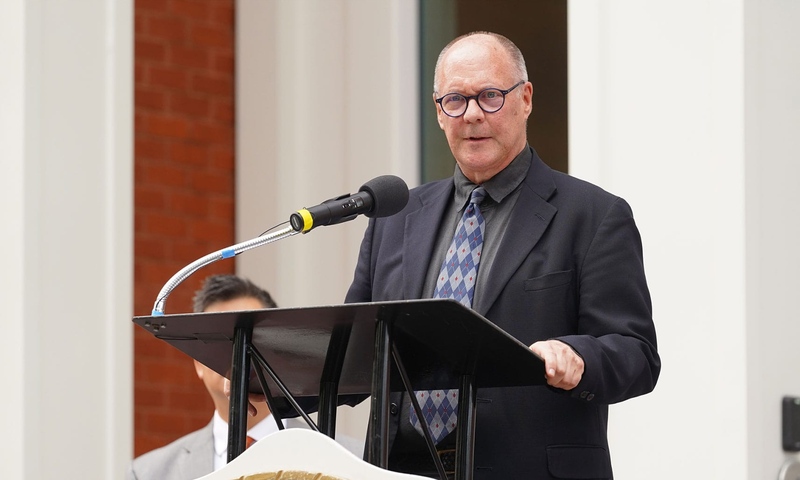The bison munching grass have no idea they’re doing anything special. They’re just hanging out on a windswept prairie. But for data analytics professor and ecologist Sarah Supp, the bison are a window into understanding how an ecosystem is affected by fire, grazing habits, and climate change.
Supp’s most recent research project, funded by the National Science Foundation, measures the ups and downs of biodiversity in the 8,600-acre Konza Prairie Long Term Ecological Research Program, located in the Flint Hills of northeastern Kansas.
Konza’s tiny corner of the Sunflower State supports a colossal amount of biodiversity: 14 species of small mammals, 100+ species of birds, 70+ species of grasshoppers, and 300+ species of plants. Scientists have been collecting information on each one for more than 40 years, so Supp can track populations as they go up and down.
But she wants to answer a deeper question: Why are populations changing?
To help her tackle that question, Supp has several aces up her sleeve. First, her extensive experience in biodiversity research on all types of flora and fauna. Second, a powerful new statistical method that can tease small-scale nuances out of large amounts of data.
Rounding out the trifecta is data analyst Maya Parker-Smith, whom Supp hired to help her on the project. Parker-Smith conducts research in the Konza preserve and knows it well. She says working in an area full of large and unpredictable mammals requires patience and a bit of luck. “It’s surreal to see bison just roaming around freely,” she says. “We’d wake up every day and just hope the herd wasn’t in the same place we were conducting research.”
Freely roaming bison are an essential component of the Konza experiment. The preserve is divided into 50 or so “watershed” sites, and each one undergoes different burning and grazing regimens. The Konza program was set up to study how different species react to different processes, Parker-Smith says. “It lets us see how a species is doing before and after we kick the system.”
That’s important, Supp says, because, “our ability to compare species response across different scenarios allows us to more confidently identify and attribute causes of change in species populations, or in biodiversity as a whole.”
Seeing what happens to a species after grazing and/or burning is part of the answer, but it doesn’t take into account climate change — or the unruly nature of life itself. Just like the stock market, plants and animals naturally experience boom and bust years, Supp says.
“Species ‘blip’ in and out all the time,” she says. “We don’t know why that happens or how that is reflected in the data.”
To help her connect the dots of cause and effect, Supp is stress-testing a new statistical model, one she helped introduce during a similar study two years ago. “It builds on this new classification method,” she says. “It’s a different way to think about the data that can lead to new insights.”
Researchers are beginning to see some correlations between populations of small mammals to certain disturbances, such as fire frequencies, says Supp, who adds it will take another year to finish the analysis and write up the first paper for publication.
Supp and Parker-Smith are planning to visit the Konza site this fall. She’ll talk to the original data collectors and walk the watersheds. And she hopes to see some of the bison that are helping her answer that big question: Why?
About NSF
The U.S. National Science Foundation (NSF) is an independent federal agency that supports fundamental research and education across all fields of science and engineering. In Fiscal Year 2022, its budget is $8.8 billion. NSF funds research in all 50 states through grants to nearly 2,000 colleges, universities and other institutions. Each year, NSF receives more than 50,000 competitive proposals for funding and makes about 12,000 new funding awards.
This material is based upon work supported by the National Science Foundation under Grant No. 2227298. Any opinions, findings, and conclusions or recommendations expressed in this material are those of the author(s) and do not necessarily reflect the views of the National Science Foundation.
